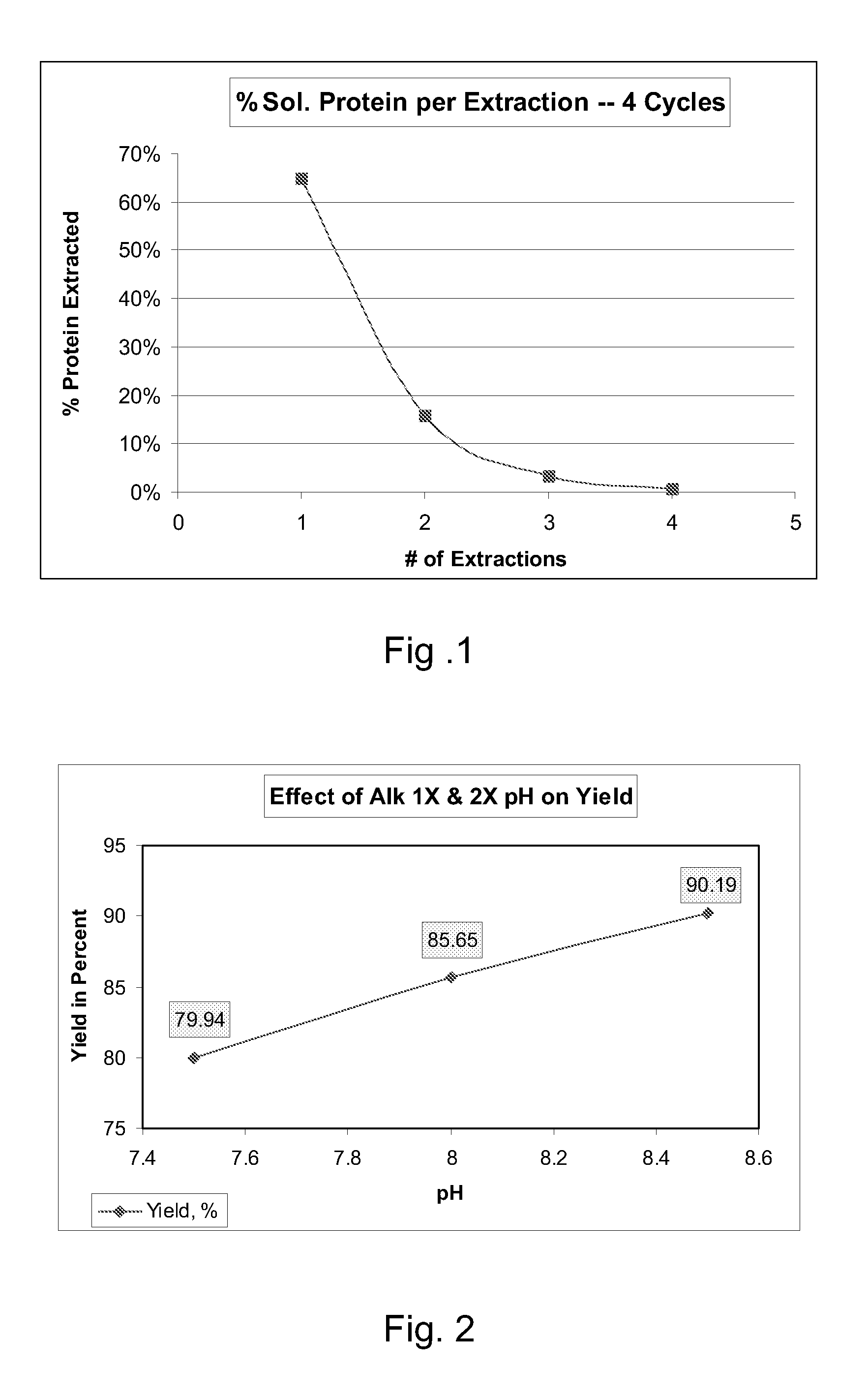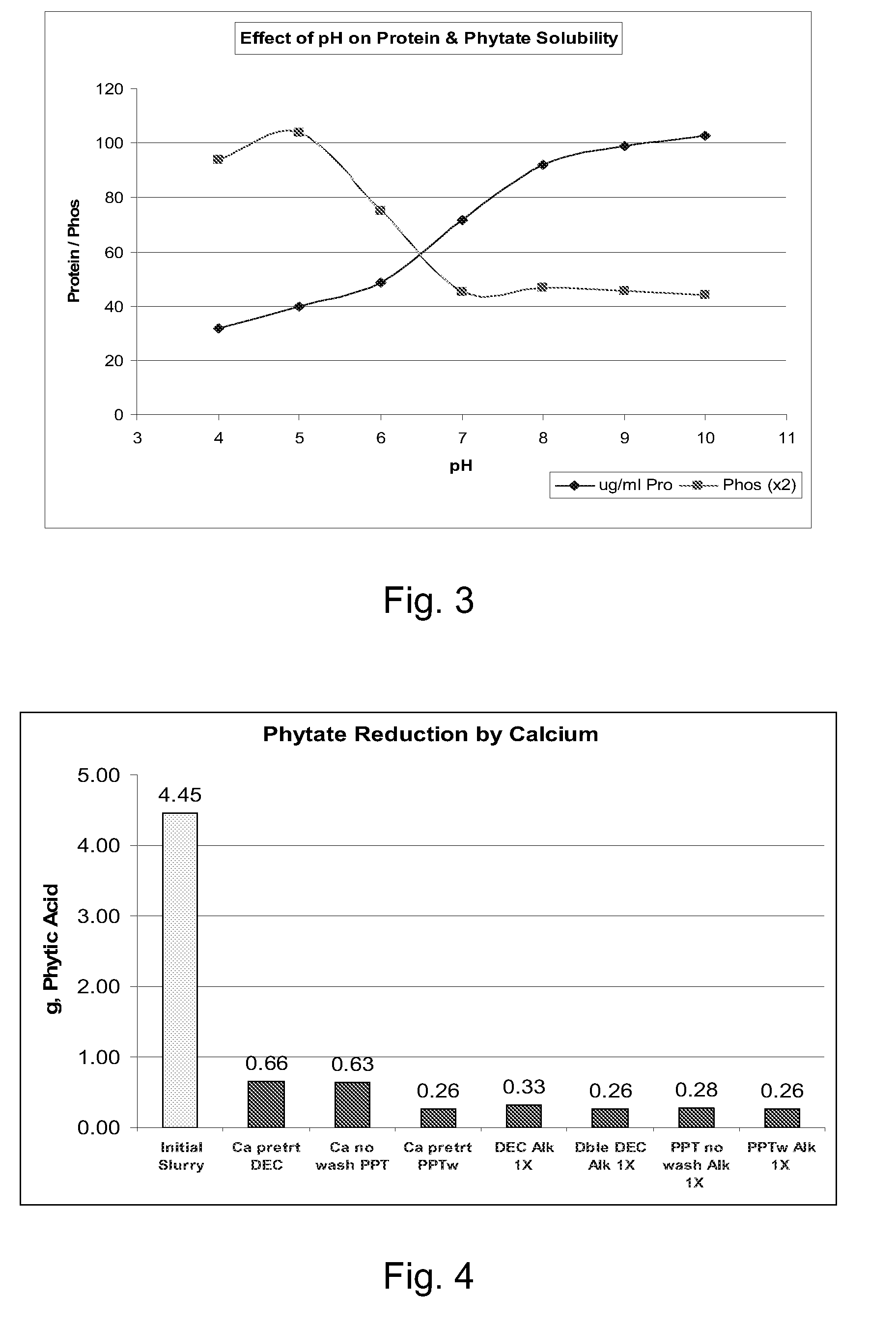Process for edible protein extraction from corn germ
- Summary
- Abstract
- Description
- Claims
- Application Information
AI Technical Summary
Benefits of technology
Problems solved by technology
Method used
Image
Examples
Embodiment Construction
[0030]The method described takes advantage of properties of the germ proteins within the germ structure to: (1) preserve the functional and nutritional aspects of the protein by careful control at each step to not denature the protein, (2) extract the valuable protein based upon physical properties such as water extractability and solubility of the germ proteins, (3) recover the proteins by methods that do not denature the proteins, and (4) recover the proteins at high concentration levels (i.e. greater than about 70% protein) and high yields of the soluble proteins (i.e. about 80 to 90%).
[0031]We found that a finer grind results in a higher extraction of the water extractible / soluble germ proteins. Defatted germ was milled using the finest setting on a Perten Laboratory Mill model 3600 that resulted in flour at approximately 20 mesh. This material was compared to a finer milled flour prepared using a Cyclotech lab mill (1 mm screen) and to a commercial ultra-fine milled product fro...
PUM
 Login to View More
Login to View More Abstract
Description
Claims
Application Information
 Login to View More
Login to View More - R&D
- Intellectual Property
- Life Sciences
- Materials
- Tech Scout
- Unparalleled Data Quality
- Higher Quality Content
- 60% Fewer Hallucinations
Browse by: Latest US Patents, China's latest patents, Technical Efficacy Thesaurus, Application Domain, Technology Topic, Popular Technical Reports.
© 2025 PatSnap. All rights reserved.Legal|Privacy policy|Modern Slavery Act Transparency Statement|Sitemap|About US| Contact US: help@patsnap.com


